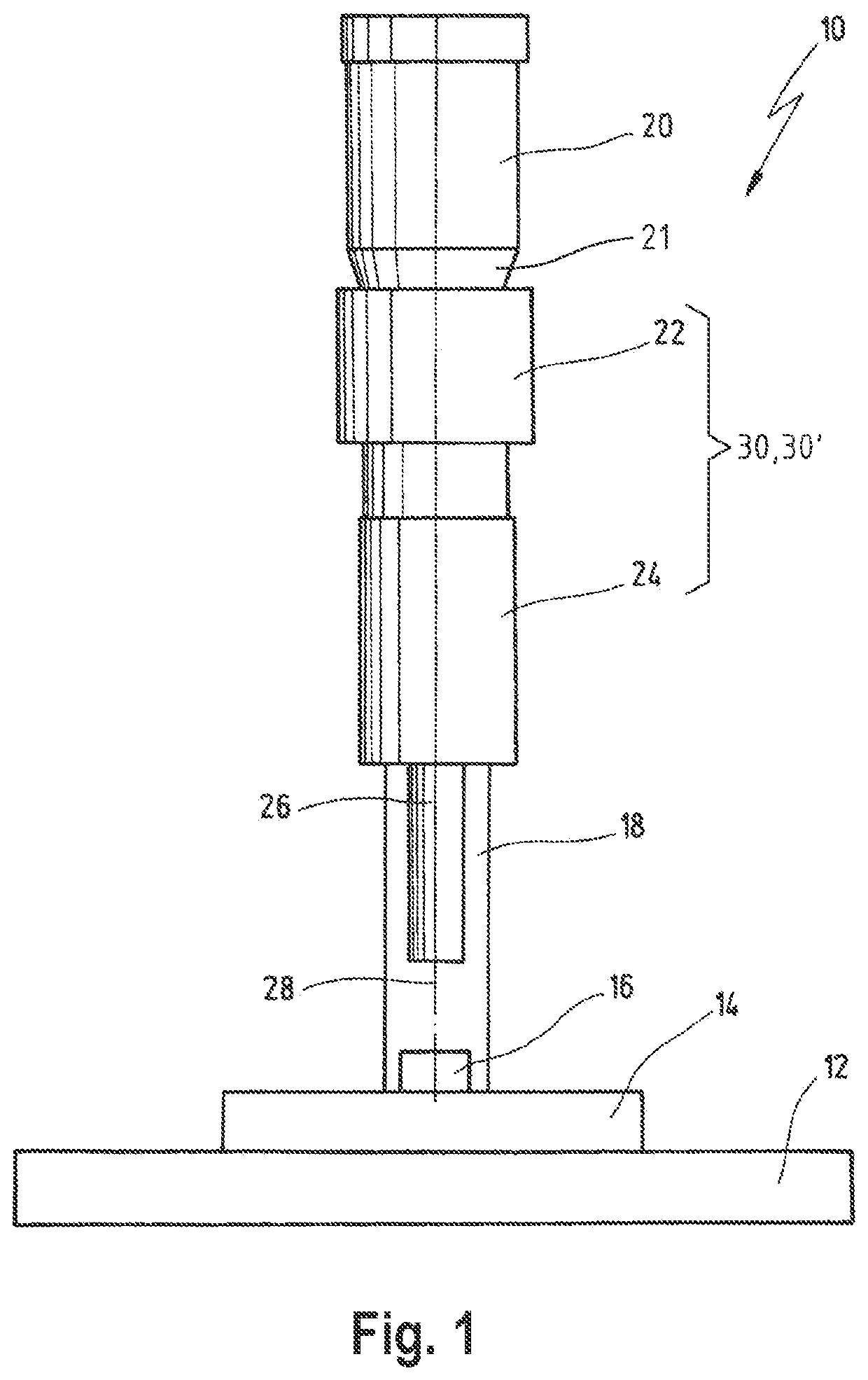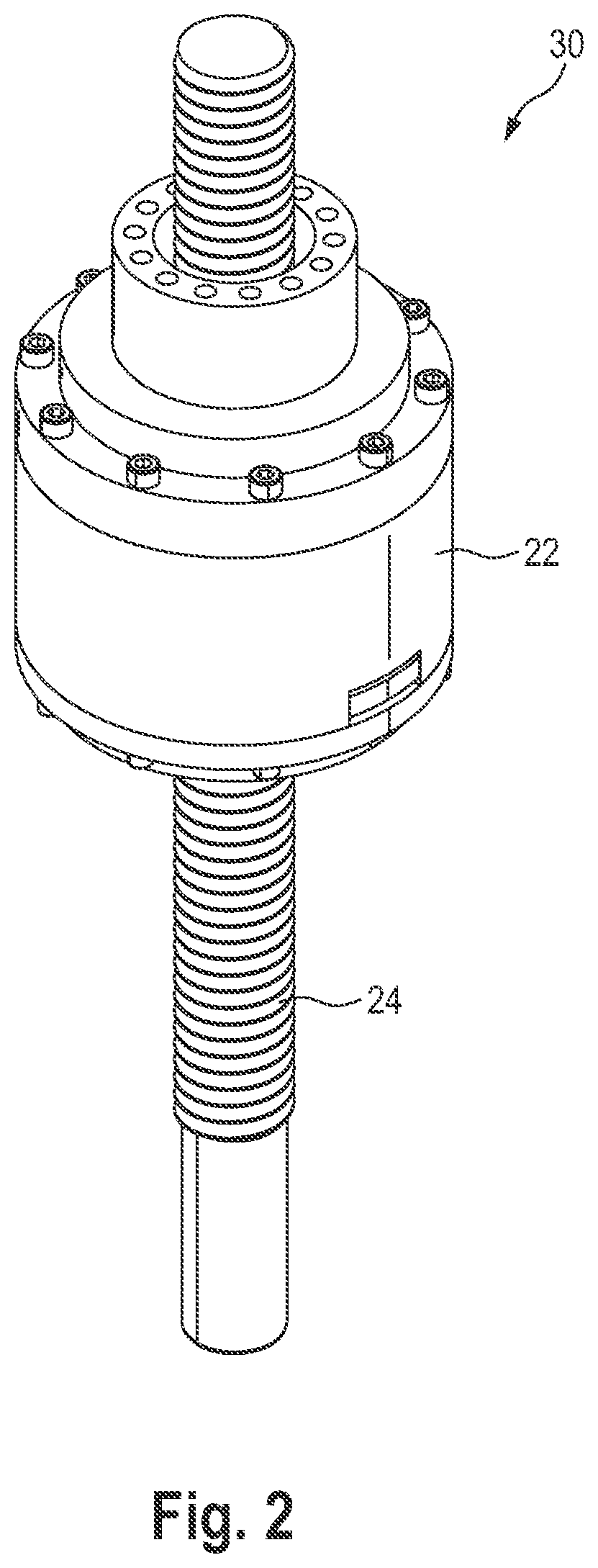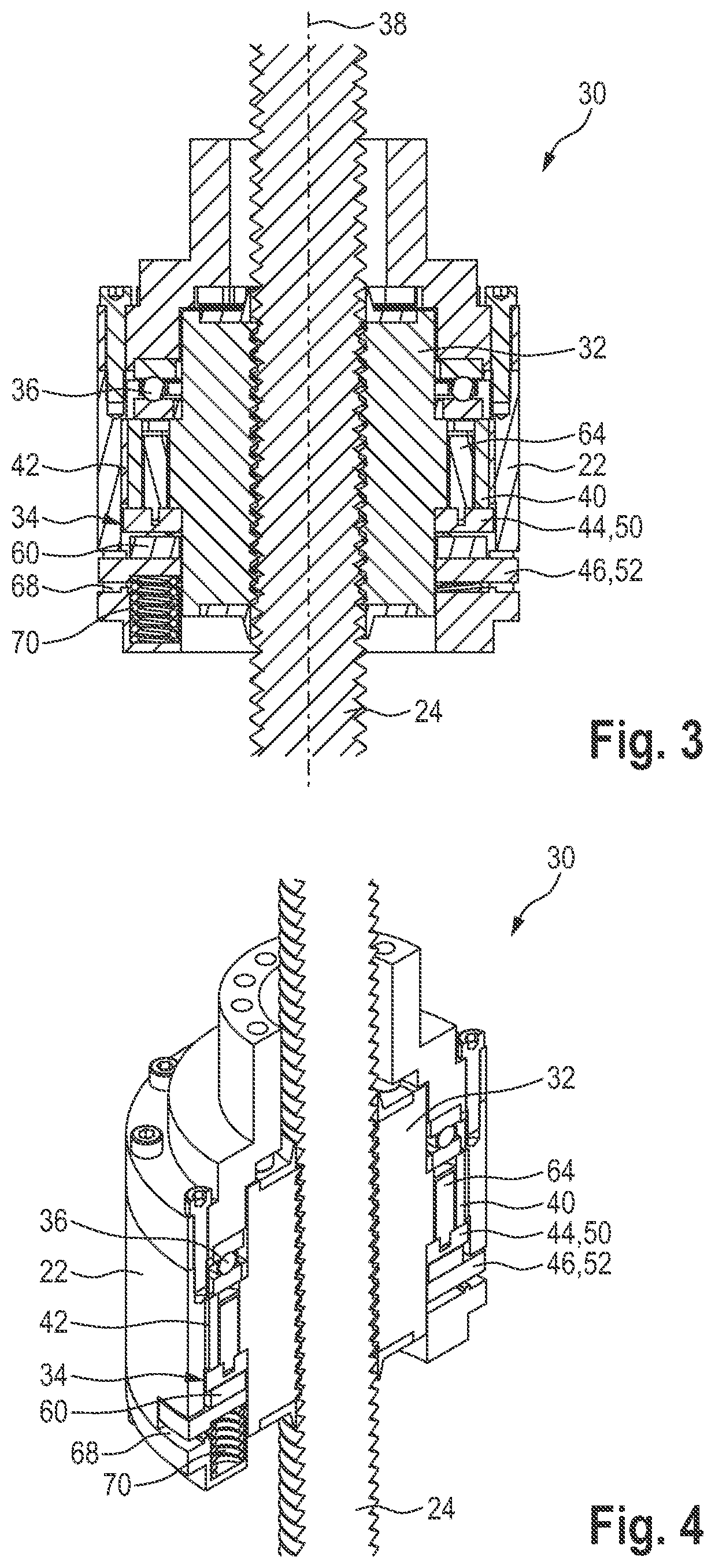Press with spindle drive
a spindle drive and press technology, applied in the field of press, can solve the problems of destroying drive train parts, affecting the operation of the press, and affecting the operation of the press, and achieve the effect of eliminating the tolerance of individual spring elements
- Summary
- Abstract
- Description
- Claims
- Application Information
AI Technical Summary
Benefits of technology
Problems solved by technology
Method used
Image
Examples
first embodiment
[0062]FIG. 2 shows the spindle drive 30 in a perspective illustration. Further sections and half-sections are shown in FIGS. 3 and 4.
[0063]In addition to the housing 22 and the spindle 24, the spindle drive furthermore comprises a spindle nut 32 mounted on the spindle 24. The illustrative embodiment of the spindle drive 30 in the present case is a spindle drive with a driven spindle nut 32. Accordingly, the spindle nut 32 is driven in rotation, thereby bringing about a purely translational motion of the spindle 24 (without rotation). To be able to ensure this, the spindle 24 is provided with an anti-rotation safeguard (not shown). The spindle nut 32 is driven indirectly in that the housing 22 is driven by the drive motor 20. The housing 22 is therefore connected in a fixed manner to the drive shaft of the drive motor 20. The drive motor 20 is preferably designed as a hollow shaft motor, and therefore the housing 22 is inserted partially or entirely into the hollow shaft 21 of the dr...
second embodiment
[0082]A difference of the second embodiment consists in the type of embodiment of the overload clutch 34′. Here, the second clutch component 46′ is not configured as a latching disk but comprises a plurality of holders 82, in each of which a latching element 48′ is resiliently mounted. The latching elements 48′ are of substantially bar-shaped configuration. The holders 82 are arranged in the housing 22′ in such a way that the latching elements 48′ are movable in the radial direction, i.e. perpendicularly to the longitudinal axis 38′ of the spindle 24′.
[0083]In the second embodiment, the first clutch component 44′ is configured as a sleeve 80, which surrounds the spindle nut 32′ or is placed on the latter. The sleeve 80 comprises a plurality of grooves 84, in which the rod-shaped latching elements 48′ engage in the latched position (see FIG. 9).
[0084]In a similar or identical way to the first embodiment, the sleeve 80 which forms the first clutch component 44′ is connected to the spi...
PUM
 Login to View More
Login to View More Abstract
Description
Claims
Application Information
 Login to View More
Login to View More - R&D
- Intellectual Property
- Life Sciences
- Materials
- Tech Scout
- Unparalleled Data Quality
- Higher Quality Content
- 60% Fewer Hallucinations
Browse by: Latest US Patents, China's latest patents, Technical Efficacy Thesaurus, Application Domain, Technology Topic, Popular Technical Reports.
© 2025 PatSnap. All rights reserved.Legal|Privacy policy|Modern Slavery Act Transparency Statement|Sitemap|About US| Contact US: help@patsnap.com



